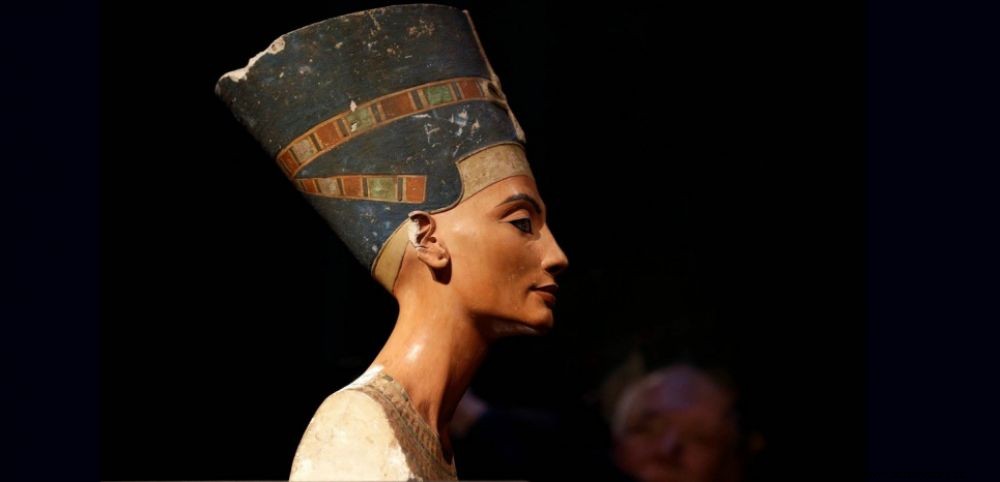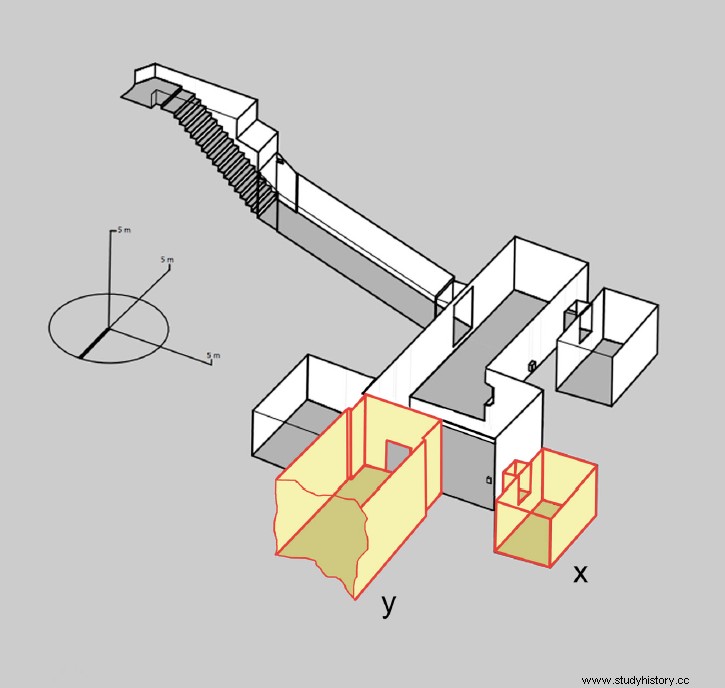 Bust of Nefertiti discovered at the site of Armana, Egypt, in 1912.
Bust of Nefertiti discovered at the site of Armana, Egypt, in 1912. Could the walls of the famous burial chamber of Pharaoh Tutankhamun (KV 62), in the Valley of the Kings, near Luxor in Egypt, have been hiding another huge secret for over 3300 years? Yes, according to Nicholas Reeves, a British Egyptologist, who has just published an article whose content makes one shiver with impatience. According to him, two unknown rooms could indeed be found behind the painted decorations of the main bedroom, one of which might house… Nefertiti (1370-1333 BC) famous sovereign of Egypt, wife of the pharaoh Akhenaten, father of Tutankhamun.
SPECIALIST. This hypothesis has nothing to do with the wacky scenarios that regularly crop up when it comes to Egyptian tombs or pyramids! Nicholas Reeves is, in fact, the former director of the "Royal Amarna Tombs Project", in other words one of the best specialists in the Valley of the Kings and sovereigns of the 18th dynasty. And if he thinks that two as yet unexplored rooms may lie at the back of the single ornate chamber in the tomb of Tutankhamun (1332-1323 BC), it's worth listening!
Nicholas Reeves had already been the discoverer in 2000 of an intact tomb in this same valley, and his new revelations follow the careful study of photographic records in high definition. These were made by the company Factum Arte during the realization of the facsimile of the tomb of Tutankhamun, today installed near the former house of Howard Carter, its famous discoverer in 1922 (read Science and Future No. 807 ).
Two concealed doors
The Egyptologist would have detected in these ultra-precise images (resolution between 100 and 700 microns) as well as 3D surveys, a certain number of cracks and linear traces under the texture of the layers of paint which adorn the walls of the original tomb. . These would suggest the presence of two concealed doors. What could they open up to? According to Reeves, certain oddities that have always intrigued specialists since they were identified among the sumptuous objects found in Tutankhamun's tomb, could provide some clues. Starting with the pierced ears of the mask of the famous gold sarcophagus. Was it originally intended for the young pharaoh of the 18th dynasty (New Empire), or had it been for a woman as was the custom? And what woman could it be if not a princess... or even a queen?

Interior of Tutankhamun's tomb (KV 62) in the Valley of the Kings. Location of the two supposed rooms (X and Y) present behind the western and northern walls of the burial chamber. The only decorated room of the pharaonic tomb. Copyright:Theban Mapping Project / Nicholas Reeves.
The graves of a large number of Egyptian queens have still not been discovered. And among these, archaeologists are still looking for the royal mummies of the rulers of the 18th dynasty to which Tutankhamun belonged, and Nefertiti, the wife of his father Akhenaten. For Nicholas Reeves, it's a safe bet that she is the one hiding behind one of these walls, in a burial that could be as sumptuous as that of the child-king.
If I'm right, this discovery could be the greatest ever made!" - Nicholas Reeves
Proof of its potential relevance, the audacious hypothesis of Nicholas Reeves caught the attention of the American archaeologist Kent Weeks, who has been working in the Valley of the Kings since 1995, and to whom we owe the very beautiful discovery of the 53 sons. of Ramses II (KV 5), the great pharaoh of the New Kingdom (1600 to 1100 BC). "Nicholas Reeves' theory could be easy to verify. A simple radar scan would make it possible to verify, at least initially, the presence or not of these cavities" , he told the weekly The Economist . To which Nicholas Reeves immediately replied:"If I'm wrong, I'm wrong! But if I'm right, this discovery could be the greatest ever made A request for authorization to carry out surveys had been submitted to the Egyptian authorities, who have since given their consent.
Nefertiti, illustrious... and unknown
If we no longer count the appearances of Nefertiti in statuary or on bas-reliefs in the company of her husband Akhenaton, we ultimately know very little about this queen whose name means "Beauty has come". From the royal tomb dedicated to her at Amarna, there is no indication that she was actually buried there. Was his body, along with that of Akhenaten, transferred to Thebes, ancient Luxor, for political reasons? We can catch ourselves dreaming…and hoping that her mummy, perhaps intact, will soon be discovered.
UPDATE.
The search for Nefertiti's tomb can begin. The Minister of Egyptian Antiquities Mamdouh Eldamaty invites Nicholas Reeves to verify his theory on the present of a secret tomb attached to that of Tutankhamen.
Nefertiti soon under the radar. The Egyptian authorities accept that, to verify the theory of Nicholas Reeves, radar checks are carried out inside the tomb of Tutankhamun.
Tutankhamun-Nefertiti:a tomb with a double bottom? On Monday September 28, 2015, the Minister of Egyptian Antiquities Mamdouh Eldamaty announced, in the presence of Nicholas Reeves, some members of the Supreme Council of Antiquities (CSA) and international press cameras, that the first examinations carried out on the north and west walls from the tomb of Tutankhamun could well conceal two funerary chambers.
